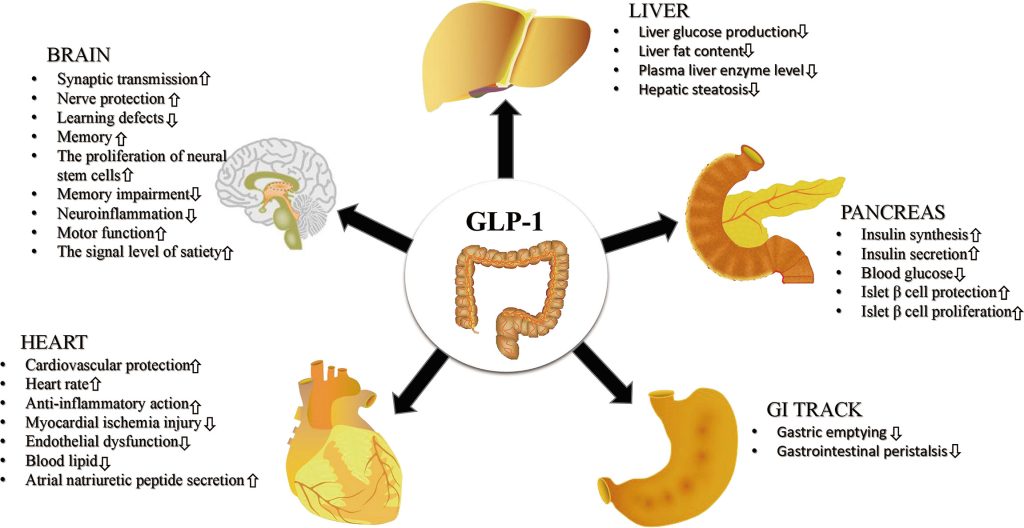
Introduction
In the realm of diabetes management and weight loss, GLP-1 receptor agonists have emerged as pivotal treatments. This article delves into the mechanisms, benefits, and considerations surrounding GLP-1 therapy, highlighting its impact on health and wellbeing.
What is GLP-1?
GLP-1, or Glucagon-Like Peptide-1, is a natural hormone produced in the intestine. It plays a crucial role in regulating blood sugar levels by stimulating insulin release in response to meals. This hormone also suppresses glucagon secretion, which helps prevent the liver from producing too much glucose.
How GLP-1 Effects Weight Loss
One of the notable benefits of GLP-1 receptor agonists is their effect on weight management. By slowing gastric emptying and promoting feelings of fullness, these medications can aid in reducing appetite and calorie intake, making weight loss more achievable for individuals struggling with obesity.
Benefits of GLP-1 Therapy
GLP-1 receptor agonists not only help in lowering blood sugar and promoting weight loss but also show promising metabolic effects in protecting heart health. Studies have indicated that these medications can reduce the risk of cardiovascular events in patients with type 2 diabetes, making them a valuable addition to treatment plans.
Considerations Before Starting GLP-1 Treatment
Before initiating GLP-1 therapy forum, patients should consider potential side effects such as nausea and gastrointestinal disturbances. It’s essential to discuss these aspects with a healthcare provider to determine the suitability of this treatment option based on individual health needs.
Conclusion
In conclusion, GLP-1 receptor agonists represent a significant advancement in diabetes management and weight loss strategies. Their dual benefits of improving glycemic control and aiding in weight reduction make them a valuable tool in combating these chronic conditions.
FAQs
1. What are the common side effects of GLP-1 receptor agonists?
Nausea, vomiting, and diarrhea are common side effects reported by some patients starting GLP-1 therapy. These symptoms often subside over time as the body adjusts to the medication.
2.How do GLP-1 receptor agonists help in weight loss?
GLP-1 receptor agonists slow gastric emptying and increase feelings of fullness, which can lead to reduced calorie intake and gradual weight loss.
3. Are GLP-1 medications suitable for all patients with type 2 diabetes?
While generally well-tolerated, GLP-1 therapies may not be suitable for everyone. Factors such as medical history, current medications, and individual health goals should be considered before starting treatment.
4. What is the recommended dosage frequency for GLP-1 receptor agonists?
Dosage frequency can vary depending on the specific medication prescribed. Some GLP-1 therapies are administered once daily, while others are taken weekly. It’s important to follow the prescribed regimen as directed by a healthcare provider.
5. Can GLP-1 receptor agonists be used alongside other diabetes medications?
Yes, GLP-1 receptor agonists are often used in combination with other diabetes medications to achieve optimal blood sugar control. However, the specific combination therapy should be determined by a healthcare provider based on individual needs.